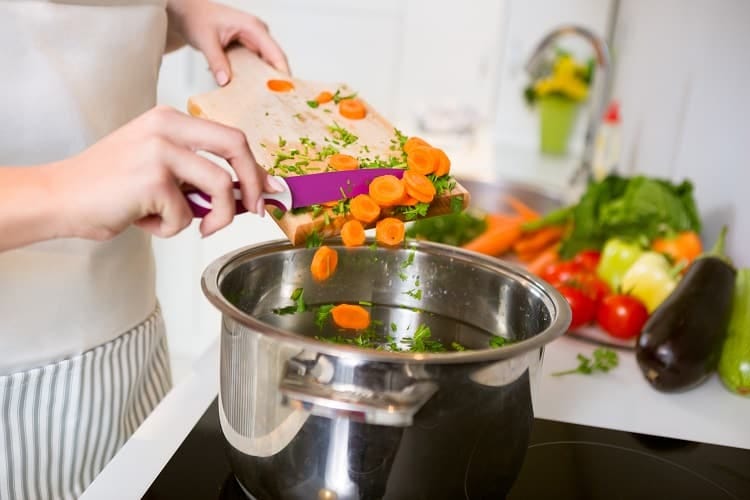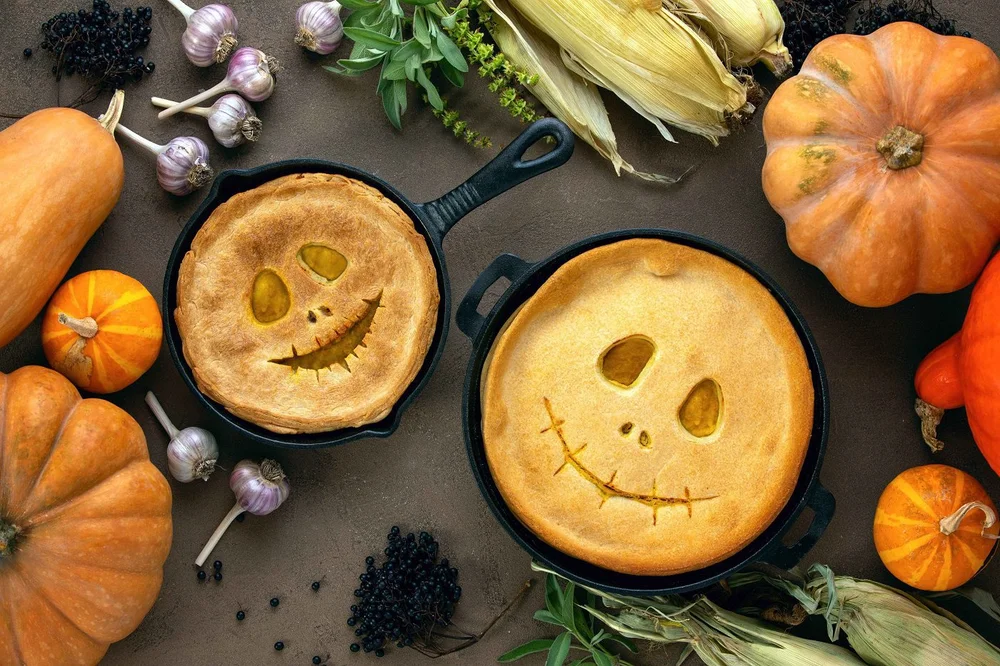Healthy Cooking Techniques: How to Maximize the Nutritional Value of Your Meals
Shall I steam or boil my corn? Will the microwave zap my veggie soup of nutrients? Should I chop my veggies or cook them whole?
These are excellent questions to ask when you want to ensure you’re maximizing the nutritional value of the foods you eat. Depending on the type of food, the way you choose to prepare it may increase or decrease how much of its vital nutrients are available to you.
Here’s how various cooking techniques can maximize the nutritional value of the food you consume.
Benefits of Cooking Food

Aside from being delicious and warming, certain cooked foods can boost digestion and even improve the absorption of many nutrients. Indeed, the cooking process can help to break down the tough outer layer and cellular structure of a number of vegetables, allowing for easier absorption of their nutrients.
For example, when tomatoes are cooked, their lycopene is more readily available. The same goes for antioxidants in carotenoids such as carrots, spinach, sweet potatoes, and peppers. Cooked spinach has been shown to have more calcium, magnesium, and iron than raw spinach. And cooked eggs offer protein that’s 180% more digestible than the protein in raw eggs.
That said, nutrients can be lost in the cooking process too – especially water-soluble vitamins (vitamin C and B vitamins), fat-soluble vitamins (vitamins A, D, E, and K), and minerals.
There are a few tips to follow to minimize nutrient loss. For example, using less water, lower temperatures, and shorter cooking times generally helps to retain nutrients in food. Also, cutting food after cooking can help to lessen nutrient loss as less of the food is exposed to heat and water when cooked whole.
Steaming Is Best
When it comes to maintaining nutrients in the vegetables you consume, steaming is one of the best methods for cooking. Steaming is a gentler way to cook because the vegetables don’t come in contact with the boiling water.
One research study compared cooking methods and nutritional value with broccoli. Steaming maintained the highest levels of nutrients over boiling, microwaving, or stir-frying.
Steaming even helps to preserve water-soluble vitamins like vitamin C. Only 9-15% of vitamin C was lost in a study that steamed broccoli, spinach, and lettuce.
Some may think steaming is too bland, but you can usually flavor it well with spices, a little lemon, and perhaps some olive oil after your vegetables are cooked.
Microwaving Is Good
Surprisingly, while microwaving tends to take moisture out of food – it holds nutrients very well. Although it doesn’t always cook or warm foods evenly, microwaving is safe, fast, and easy. The short cooking time and reduced exposure to heat are what make it a great way to retain your food’s nutrients.
A Harvard Medical School report explains, “Using the microwave with a small amount of water essentially steams food from the inside out. That keeps in more vitamins and minerals than almost any other cooking method and shows microwave food can indeed be healthy.”
Who knew?
Careful When Boiling
Boiling food is easy, fast, and convenient. But there are a few important things to know in order to minimize nutrient depletion when boiling foods.
When you boil food, water-soluble vitamins are lost at a higher rate than other methods of cooking as they leach out of foods immersed in water. For example, green veggies such as broccoli and spinach may lose as much as 50% or more of their vitamin C in boiling water. Similarly, when meat is boiled, it can lose as much as 60% of its B vitamins.
However, the water retains most of the soluble vitamin content and all the minerals that leach out of the vegetables and meat during boiling. If you reserve boiling foods for soups, stews, and other recipes that are broth-based, you can capture a lot of the water-soluble nutrients that leach out!
Boiling has some benefits too. Vegetables and whole grains contain anti-nutrients that may make absorption of nutrients more challenging. For example, lectins in legumes and whole grains can interfere with the absorption of iron, calcium, zinc, and phosphorus. When you boil these foods, it reduces anti-nutrients that impede nutrient absorption, reports Harvard University School of Public Health.
Simmering and poaching, which involve immersing foods in water at lower temps, have very similar effects as boiling.
The Take on “Roast and Bake”
Roasting and baking are synonymous. They both use dry heat to cook foods.
Roasted and baked foods generally lose a minimal amount of nutrients. But meats do lose their vitamin B content (as much as 40%) due to the longer cooking times at high temperatures. However, you can counter this loss by simply adding the juices back on top of your roasted meat.
When roasting vegetables, you can boost nutrient and fiber content by not peeling them. Also, using oil when roasting can speed up the cooking process and help increase fat-soluble vitamin absorption from vegetables. Consider baking your veggies in a covered casserole dish. That way much of their natural moisture is retained – as well as their water-soluble vitamins.
The Benefits of Sautéing and Stir-Frying
Sautéing and stir-frying with a moderate amount of healthy fat like olive oil is a great way to cook and boost nutritional value. The added healthy fat has been shown to improve absorption of the beneficial antioxidants and compounds found in fresh produce.
For example, absorption of beta carotene was nearly 7 times greater in stir-fried carrots over raw ones in one study. When people consumed tomatoes cooked in olive oil, blood lycopene levels increased 80% more than without the oil!
About Grilling and Broiling
Grilling and broiling, like roasting, use dry heat either from below (grilling) or above (broiling). Unfortunately, when grilling meats, up to 40% of the minerals and B vitamins are lost as the meat juices fall away. Keep in mind also that grilling may pose a health risk. Potentially cancer-causing substances called polycyclic aromatic hydrocarbons (PAHs) can form during the process of grilling meat when fat drips onto a hot surface.
On a brighter note, nutrient loss is less with broiling as more juices are retained. And these are great cooking methods for vegetables without losing too many nutrients. They can make tougher vegetables more flavorful and easier to digest too!
Frying Pros and Cons
In general, frying is not a recommended cooking method for health, but it isn’t so bad when it comes to nutrient retention.
The fiber content of potatoes is increased by frying due to the formation of resistant starch. And frying vegetables does tend to retain nutrients. Fried foods are generally a good source of vitamin E as well. However, frying can damage the omega-3s in fish, reducing omega-3 content by 70% or more.
Stay Informed
Research continues to reveal new insights on how cooking methods impact nutritional content. Stay informed. Regardless of the cooking method, remember that you can’t really go wrong with a brain healthy diet filled with colorful vegetables, legumes, fruits, whole grains, lean meats, fatty fish, fermented foods, and healthy fats.
At BrainMD, we’re dedicated to providing the highest purity nutrients to improve your physical health and overall well-being. For more information about our full list of brain healthy supplements, please visit us at BrainMD.
- What Are the 7 Healing Frequencies and Benefits of Sound Healing? - April 26, 2024
- Here Are Some of the Best Tension Release Exercises to Help You Feel Your Best! - April 17, 2024
- Foodscaping: How to Grow Healthy Foods In Your Own Garden! - April 12, 2024



